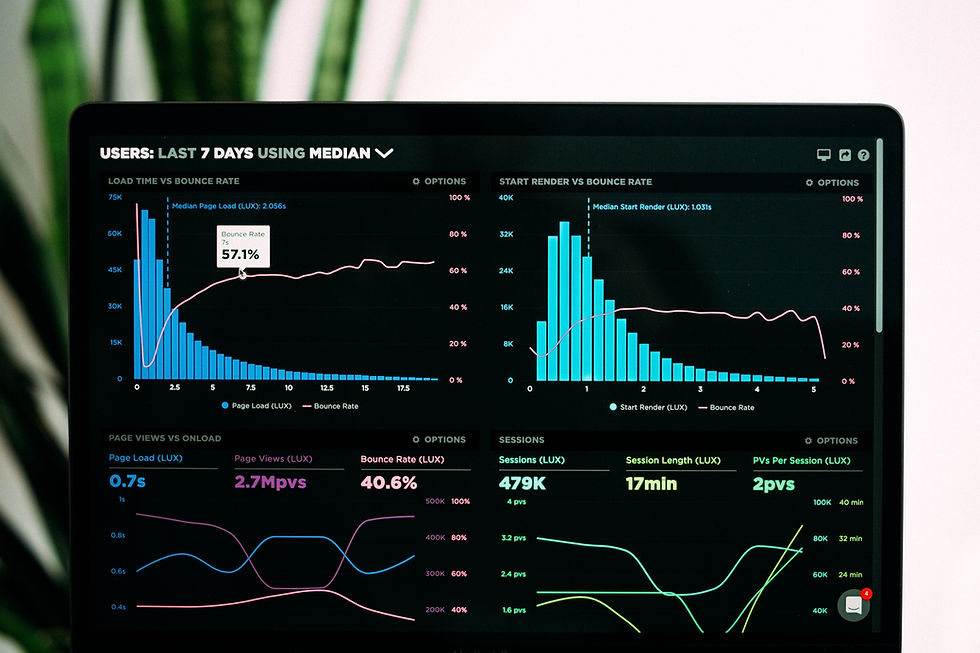Leveraging Analytics and Intelligence Technology to Transform B2B Marketing and Sales Pipeline
- Hooman Hashemi

- Jun 6, 2023
- 3 min read
Updated: Jul 20, 2023
The landscape of B2B marketing and sales has evolved significantly with the advent of analytics and intelligence technology. Businesses can now harness the power of data-driven insights to enhance their marketing and sales pipelines, optimize lead generation, improve conversion rates, and drive revenue growth. In this comprehensive guide, we will explore how organizations can leverage analytics and intelligence technology to transform their B2B marketing and sales pipelines.

I. Defining Goals and Key Metrics )
To embark on the journey of enhancing the B2B marketing and sales pipeline, it is crucial to define clear goals and identify key metrics that align with the business objectives. Common metrics include lead conversion rates, customer acquisition costs, revenue generated, and customer lifetime value. By establishing these metrics, organizations can measure the success of their marketing and sales efforts and identify areas for improvement.
II. Collecting and Integrating Data
Data forms the foundation for analytics and intelligence technology. Businesses need to identify and collect relevant data from various sources, such as customer relationship management (CRM) systems, marketing automation platforms, website analytics, social media platforms, and customer interactions. Integrating this data into a centralized system allows for a comprehensive analysis of the entire pipeline.
III. Cleaning and Preprocessing Data
Before diving into analysis, it is crucial to ensure data cleanliness. This involves removing duplicates, handling missing values, and standardizing formats. Preprocessing the data makes it ready for analysis and ensures accurate insights.

IV. Analyzing Customer Behavior One of the primary benefits of analytics and intelligence technology is gaining insights into customer behavior. By analyzing data, organizations can understand customer preferences, buying patterns, and engagement levels across different marketing and sales channels. This knowledge empowers businesses to identify high-value prospects, optimize lead nurturing strategies, and personalize marketing campaigns to maximize their effectiveness.
V. Implementing Predictive Analytics
Predictive analytics takes the power of data analysis a step further by forecasting future outcomes. By analyzing historical data and patterns, organizations can predict customer behavior, identify potential sales opportunities, and optimize resource allocation. Predictive modeling helps prioritize leads, identify cross-selling or upselling opportunities, and predict customer churn, enabling proactive and targeted marketing and sales strategies.
VI. Harnessing Machine Learning and AI
Machine learning algorithms and artificial intelligence techniques bring automation and advanced decision-making capabilities to the B2B marketing and sales pipeline. Recommendation systems can be developed to provide personalized product suggestions, lead scoring models can prioritize leads for sales teams, and chatbots can be deployed to enhance customer interactions and support. Machine learning algorithms continuously learn from data, enabling businesses to optimize processes and make data-driven decisions.
VII. Integrating Marketing Automation
Integrating analytics and intelligence technology with marketing automation platforms is essential for seamless and efficient marketing campaigns. This integration enables automation of marketing processes, personalized communication based on customer insights, and tracking the effectiveness of marketing efforts. By automating repetitive tasks and leveraging customer data, organizations can improve efficiency, increase personalization, and drive engagement.

VIII. Optimizing Sales Processes
Analytics and intelligence technology can uncover bottlenecks and inefficiencies in the sales pipeline. Analyzing sales data provides insights into conversion rates at each stage, helps identify areas for improvement, and enables the optimization of sales processes. Sales forecasting, territory management, and sales team performance analysis become data-driven, allowing organizations to make strategic decisions to drive revenue growth.
IX. Continuous Monitoring and Iteration
To ensure sustained improvement, organizations must continuously monitor the performance of their marketing and sales pipelines. Tracking the defined KPIs and regularly assessing the effectiveness of analytics and intelligence initiatives is crucial. By iterating and making data-driven adjustments, businesses can consistently optimize their strategies for better results.
X. Fostering a Data-Driven Culture
Lastly, it is essential to cultivate a data-driven culture within marketing and sales teams. Encouraging the use of analytics and intelligence technology, providing training and resources, and facilitating collaboration between marketing, sales, and data teams can help leverage insights effectively. When data-driven decision-making becomes a part of the organizational culture, businesses can maximize the benefits of analytics and intelligence technology.

Leveraging analytics and intelligence technology has the potential to transform B2B marketing and sales pipelines. By defining goals, collecting and integrating data, analyzing customer behavior, implementing predictive analytics, harnessing machine learning and AI, integrating marketing automation, optimizing sales processes, continuously monitoring and iterating, and fostering a data-driven culture, organizations can unlock new opportunities for growth, enhance customer experiences, and gain a competitive edge in the B2B market. Embracing analytics and intelligence technology is no longer an option but a necessity for businesses seeking sustainable success in the ever-evolving B2B landscape


